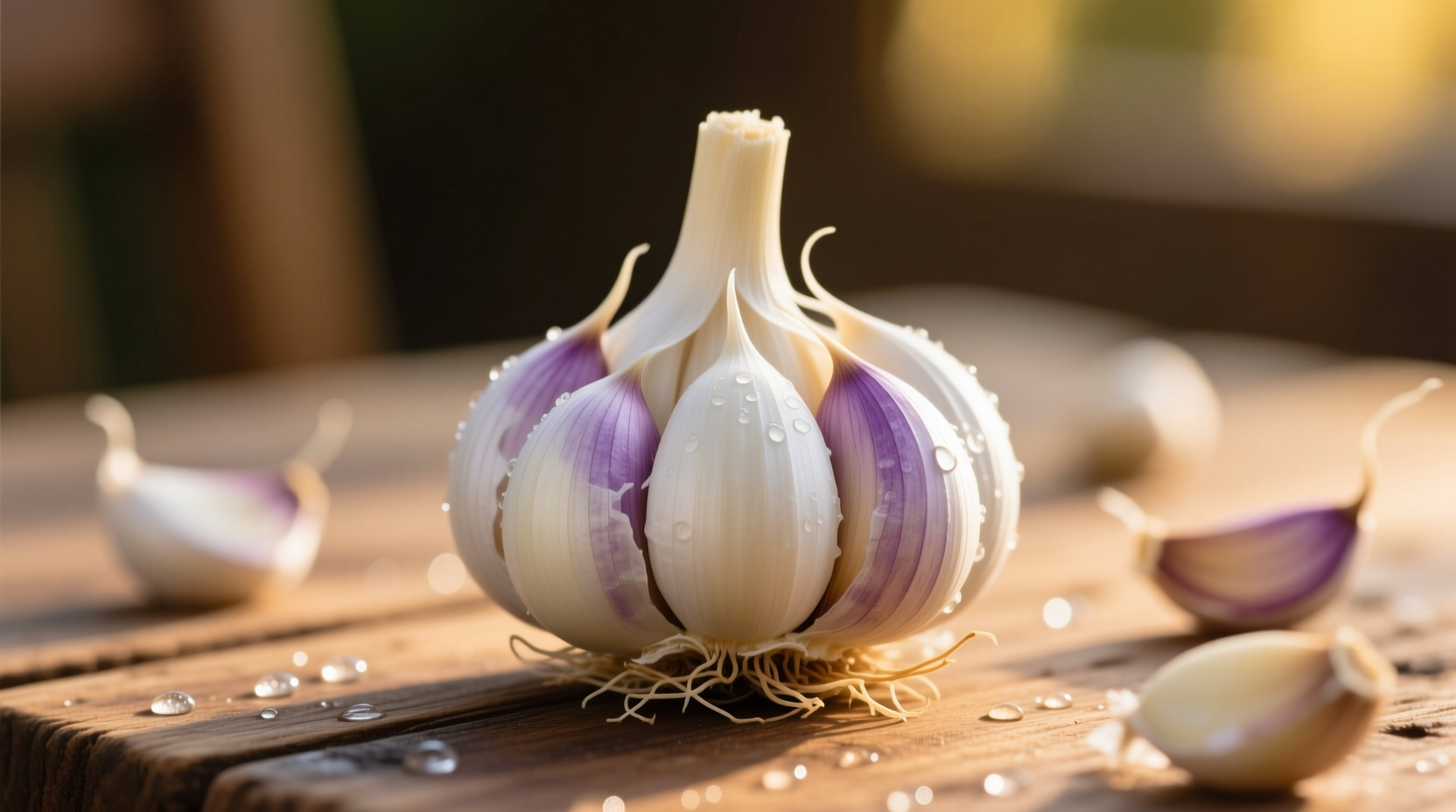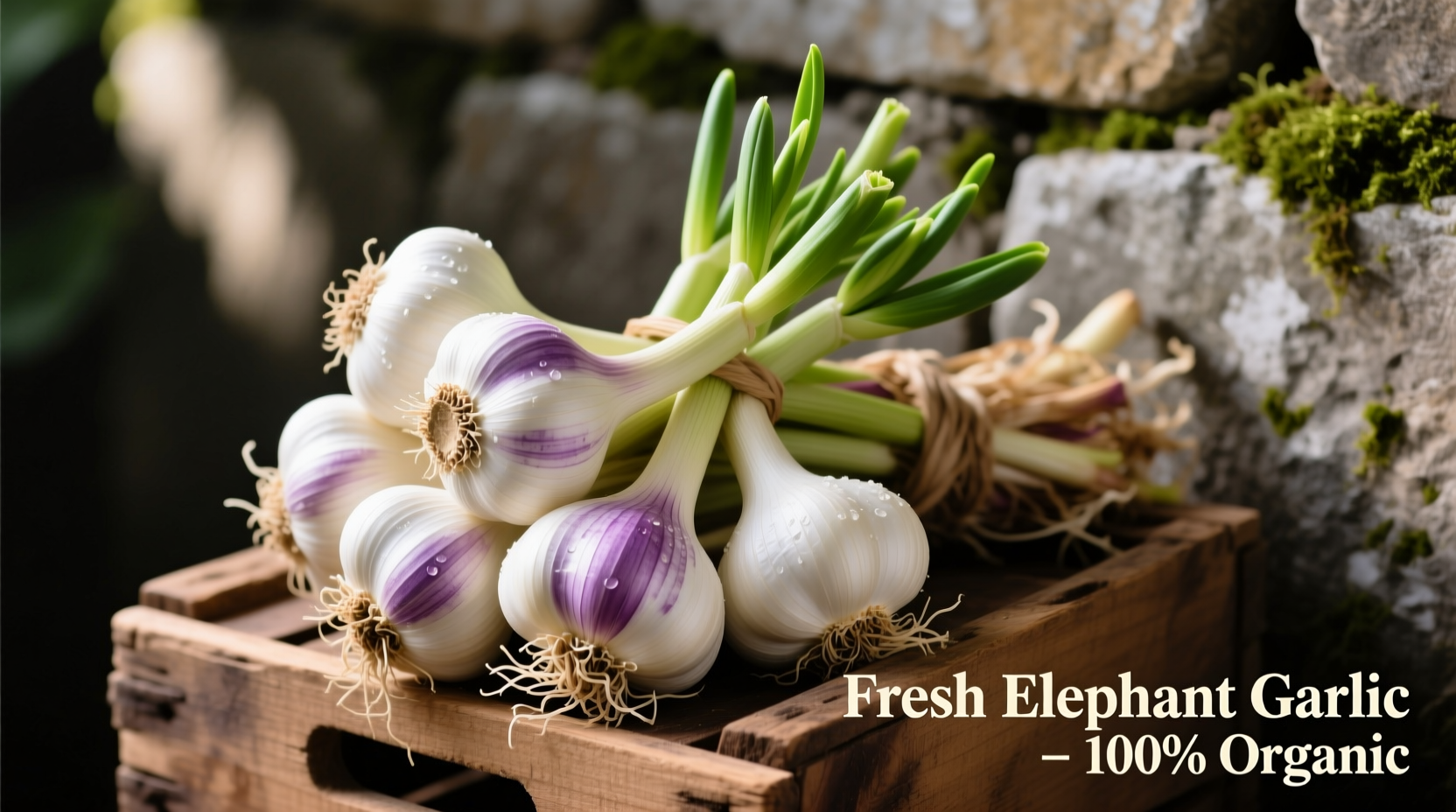Discover where to find premium elephant garlic that delivers exceptional flavor without breaking the bank. This comprehensive guide cuts through the confusion of purchasing this unique allium variety, helping you identify quality bulbs and avoid common pitfalls.
Understanding Elephant Garlic: More Than Just Big Bulbs
Despite its name, elephant garlic (Allium ampeloprasum) is actually a type of leek, not true garlic. This distinction explains its milder, sweeter flavor profile that lacks the intense pungency of regular garlic (Allium sativum). Each bulb typically contains 4-6 massive cloves that can reach 2-3 inches in diameter—perfect for recipes requiring bold garlic presence without overwhelming heat.

Where to Buy Quality Elephant Garlic
Knowing where to shop makes all the difference in securing fresh, flavorful elephant garlic. Your purchasing options fall into three main categories:
Farmers Markets: Peak Freshness Guaranteed
Local farmers markets offer the freshest elephant garlic during harvest season (May-September). Vendors typically harvest within days of market day, preserving maximum flavor compounds. Look for bulbs with intact outer wrappers and firm texture. Prices average $4-$6 per pound, with organic options running 20-30% higher. Pro tip: Ask growers about their cultivation practices—bulbs grown in well-drained soil develop superior flavor complexity.
Specialty Grocery Stores: Year-Round Availability
Stores like Whole Foods, Trader Joe's, and local co-ops typically stock elephant garlic year-round. Winter months often feature imported bulbs from California or Chile. Expect to pay $3-$5 per bulb. Check the display for these quality indicators:
- Firm bulbs without soft spots
- Intact papery skin
- No visible sprouting
- Heavy weight for size
Online Retailers: Convenience with Caveats
Reputable online sources like Melissa's Produce and Harry & David offer elephant garlic with nationwide delivery. During off-season months, this becomes your best option for fresh product. When ordering online:
- Verify harvest dates (within 2-3 weeks is ideal)
- Check shipping methods (cold packing essential in warm months)
- Read return policies for damaged goods
| Source | Price Range | Seasonality | Quality Indicators |
|---|---|---|---|
| Farmers Markets | $4-6/lb | May-Sept (local) | Recently harvested, firm bulbs |
| Grocery Stores | $3-5/bulb | Year-round | No sprouting, tight skin |
| Online Retailers | $5-8/bulb + shipping | Year-round | Harvest date verification |
What to Look for When Buying Elephant Garlic
Not all elephant garlic delivers equal quality. Use these professional selection criteria before purchasing:
Physical Inspection Checklist
Examine bulbs carefully for these quality markers:
- Weight: Heavy bulbs indicate dense, juicy cloves (avoid lightweight specimens)
- Skin condition: Tight, papery skin without mold or soft spots
- Smell: Fresh earthy aroma without sour or fermented notes
- Roots: Dry, shriveled roots signal proper curing
Seasonal Value Guide
Timing your purchase maximizes both flavor and value:
- May-July: Peak harvest season—best flavor, lowest prices
- August-October: Storage quality begins declining; check for firmness
- November-April: Imported bulbs available; verify origin for freshness
Storage and Culinary Applications
Proper storage extends shelf life while maintaining flavor integrity. Unlike regular garlic, elephant garlic's lower allicin content means it keeps longer but develops different flavor characteristics over time.
Optimal Storage Methods
Follow these professional storage techniques:
- Store at 60-65°F with 60-70% humidity
- Never refrigerate whole bulbs (causes premature sprouting)
- Keep in mesh bags or open containers for air circulation
- Expect 3-5 month shelf life under proper conditions
Culinary Advantages Over Regular Garlic
Elephant garlic's unique properties make it ideal for specific cooking applications:
- Roasting: Whole bulbs transform into sweet, spreadable delicacies
- Grilling: Large cloves withstand high heat without burning
- Raw applications: Milder flavor works in salads and dressings
- Preserving: Excellent for pickling and oil infusions
Avoiding Common Purchasing Mistakes
Many shoppers unknowingly buy subpar elephant garlic. Steer clear of these frequent errors:
- Mistaking oversized regular garlic: True elephant garlic has fewer, larger cloves with pinkish-purple skin
- Buying sprouted bulbs: Sprouts indicate aging and diminished flavor
- Ignoring seasonality: Off-season bulbs often lack flavor complexity
- Paying organic premiums unnecessarily: Elephant garlic rarely requires pesticides due to natural pest resistance
When Elephant Garlic Isn't the Right Choice
Understanding context boundaries prevents culinary disappointment. Elephant garlic works best in these scenarios:
- When you want garlic presence without intense heat
- For recipes requiring whole roasted cloves
- When serving raw to garlic-sensitive guests
Avoid using it when:
- Authentic pungent garlic flavor is essential
- Creating traditional garlic-heavy dishes like aioli
- Needing maximum allicin content for health benefits
Frequently Asked Questions
How much does elephant garlic typically cost?
Expect to pay $3-$8 per bulb depending on size and source. Farmers markets offer the best value during peak season (May-September) at $4-$6 per pound. Grocery stores typically charge $3-$5 per bulb year-round, while online retailers charge $5-$8 plus shipping.
Is elephant garlic worth the higher price compared to regular garlic?
Yes for specific applications. Elephant garlic costs 2-3 times more than regular garlic but offers unique culinary advantages: milder flavor, larger cloves ideal for roasting, and longer shelf life. It's worth the premium when you need substantial garlic presence without overwhelming heat, but regular garlic remains better for traditional pungent applications.
How can I tell if elephant garlic is fresh when buying online?
Check for harvest date information (within 2-3 weeks is ideal), verify cold shipping methods during warm months, and look for retailer guarantees against sprouting or soft spots. Reputable sellers like Melissa's Produce provide detailed freshness assurances and typically harvest to order during peak season.
Does elephant garlic have the same health benefits as regular garlic?
Partially. Elephant garlic contains allicin (the compound responsible for garlic's health benefits) but at lower concentrations than regular garlic. According to research from the National Center for Biotechnology Information, it provides cardiovascular benefits and antimicrobial properties, though you'd need to consume larger quantities to match regular garlic's potency. Its milder flavor makes it easier to incorporate regularly into your diet.
Can I grow my own elephant garlic to save money?
Absolutely. Growing your own provides the freshest product at lowest cost. Plant cloves in fall (October-November) in well-drained soil with full sun exposure. Harvest when leaves begin yellowing (typically June-July). A single planted clove yields one large bulb the following year. The University of California Cooperative Extension confirms elephant garlic adapts well to most temperate climates with minimal pest issues.











 浙公网安备
33010002000092号
浙公网安备
33010002000092号 浙B2-20120091-4
浙B2-20120091-4